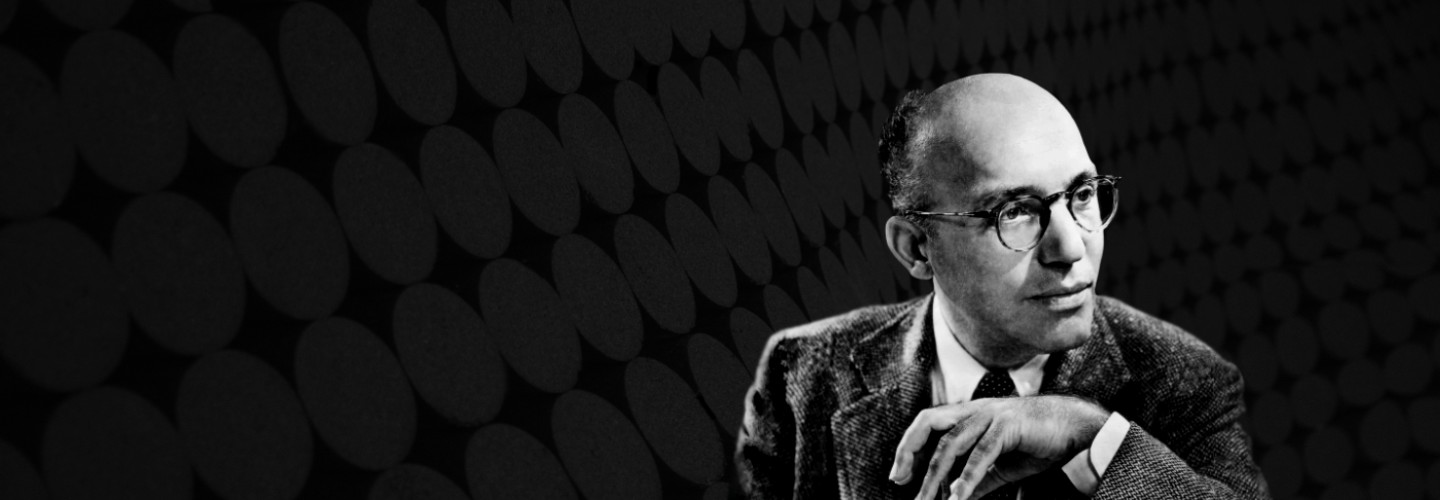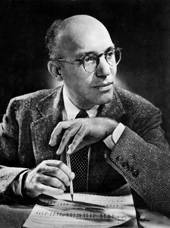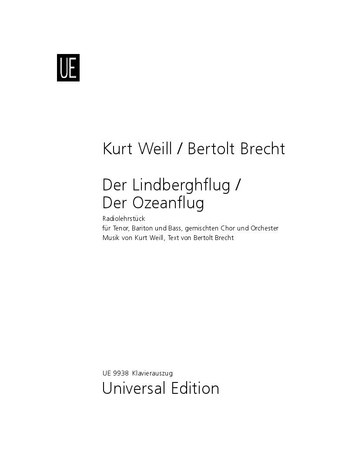

Kurt Weill
Der Lindberghflug / Der Ozeanflug
Short instrumentation: 2 0 2 2 - 0 2 2 0 - timp/perc, pno, str
Duration: 40'
Übersetzer: George Antheil, Lys Symonette
Libretto von: Bertolt Brecht
Choir: SATB
Solos:
Tenor, Bariton, Bass
Roles:
Tenor (Lindbergh)
Bariton
Bass
Instrumentation details:
1st flute (+picc)
2nd flute (+picc)
1st clarinet in Bb
2nd clarinet in Bb
1st bassoon
2nd bassoon
1st trumpet in Bb
2nd trumpet in Bb
1st trombone
2nd trombone
timpani
piano
violin I
violin II
viola
violoncello
contrabass
Weill - Der Lindberghflug / Der Ozeanflug for tenor, baritone, bass, mixed choir and orchestra
Printed/Digital
Translation, reprints and more

Kurt Weill
Weill: Der Lindberghflug (The Lindbergh Flight) for tenor, baritone and bass soloists, satb choir and orchestraOrchestration: for tenor, baritone and bass soloists, satb choir and orchestra
Type: Klavierauszug
Language: Deutsch
Sample pages
Audio preview
Work introduction
Aged just 26, Kurt Weill realised that radio offered the potential for a new genre of art. Subtitled ‘Radiolehrstück’ (teaching piece for radio), Der Lindberghflug (text: Bertolt Brecht) was a product of this idea. It consists of 16 short sections, the shortest lasting barely a minute and the longest four minutes. The rapid alternation of soloists (narrator, tenor, baritone, bass), choir passages and instrumental interludes, as well as of styles – recitative, ‘sprechgesang’ (speech-song), baroque-style passages for choir, Weill’s typical bitter-sweet melodies – creates immense dramatic tension. It is not surprising that Weill also envisaged the work for stage.
